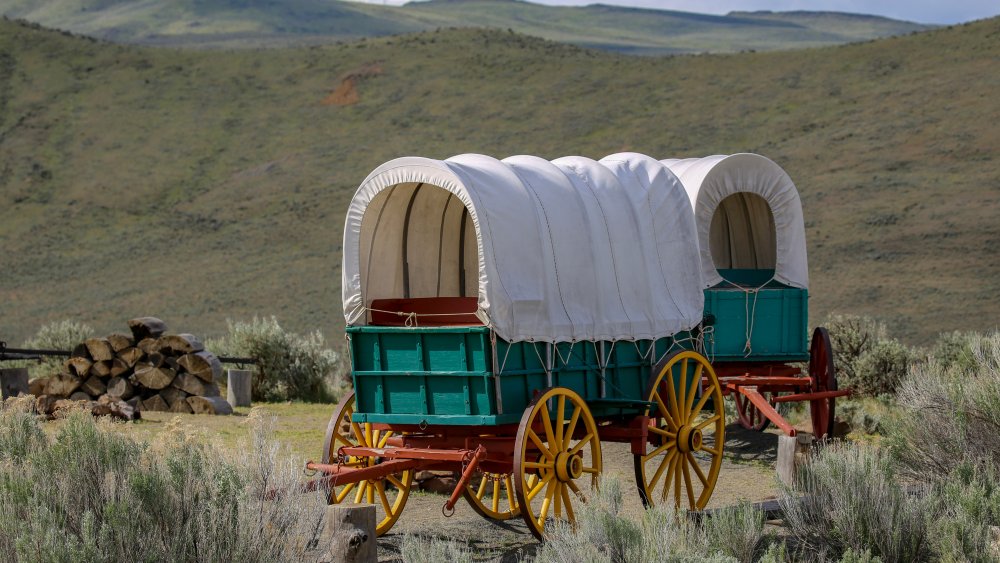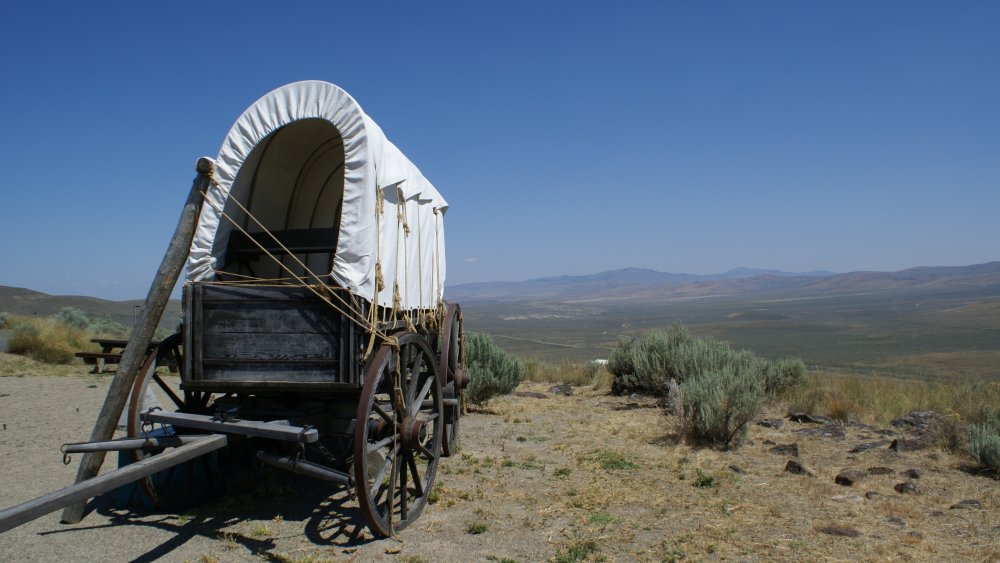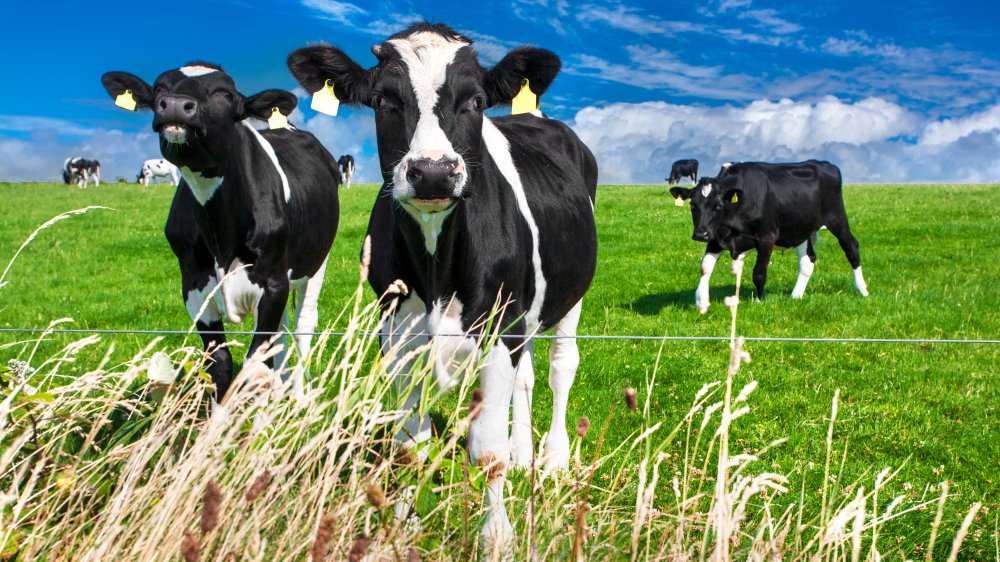How Milk Sickness Arose On The Oregon Trail
The westward expansion of the United States was not an easy process, neither for the Native Americans forced to leave their homes and travel what came to be known as the Trail of Tears, nor for the white pioneers heading out west on the Oregon Trail in search of fortune and freedom. According to the Oregon-California Trails Association, the hardships of traveling the Oregon Trail claimed the lives of nearly a tenth of the people who set foot on it. The two primary causes of death were accidents and disease, and there were many of the latter to worry about. Measles, dysentery, diphtheria, and typhoid fever were among the biggest killers, but the worst was Asiatic cholera, which was known as the "unseen destroyer." Caused by the unsanitary conditions that were prevalent along the trail, it killed silently and swiftly. "People in good spirits in the morning could be in agony by noon and dead by evening," wrote the author of the Trails Association blog post.
One person who succumbed to this terrible fate was a woman named Josephine Bristow. According to public health expert and medical historian Brian Altonen, the unseen destroyer took Josephine's life in April 1852, a mere three days after the company she was traveling with passed the contaminated waters near Fort Kearney, in Western Nebraska, where she most likely contracted it. The daughter she left behind would soon fall victim to another lesser-known invisible killer on the trail.
Josephine's daughter Susannah died of milk sickness on the Oregon Trail
Josephine left behind a daughter, Susannah, who unfortunately also died of disease not long after her mother. But her killer was much less common than the cholera that claimed so many lives during that time. Altonen wrote that Susannah's exact birthday is unknown, but she is believed to have only been between nine and 15 months old at the time of her death. Susannah's father John passed the baby on to people in another wagon train, most likely part of their extended family, in an attempt to find someone to breastfeed her. Cholera and other contagious diseases have been ruled out as the cause of death for Susannah, since the records show that she didn't pass any disease on to others in the new train of Oregon Trail travelers. So, what did she die of then?
John may have wanted his newborn daughter to be breastfed, but it is very likely that she was fed cow's milk in order to avoid this intimate contact and therefore the possible contagion by any number of terrible ailments that killed so many on the trail. This would unfortunately turn out to be a fatal mistake, and Susannah died of what would come to be known as "milk sickness" just weeks after the death of her mother.
What is milk sickness, and why was it a problem on the Oregon Trail?
Unlike other contagious diseases that killed thousands on the Oregon Trail, milk sickness came from drinking the tainted milk of cows who had grazed on a weed common to many areas through which the trail passed: Eupatorium rugosum, or white snakeroot. Altonen writes that white snakeroot contains toxins that produce "a bitter milk due to cattle secreting these chemicals as part of the milk production process." The most deadly of these is called Tremetol, but it's likely that a resinous acid and a volatile oil also played a role in poisoning much of the cows' milk on the Oregon Trail. The toxins affected the liver and other organs of those who drank the milk, worsening problems in adults with preexisting liver conditions, and creating problems in young children.
Also called the trembles, the slows, puking fever, and sick stomach, milk sickness causes a loss of appetite, lethargy, fatigue, muscle aches and stiffness, abdominal pains, vomiting, severe constipation, halitosis (bad breath), and, in the end, coma and most often death. According to the National Park Service, perhaps the most notable victim of milk sickness was Abraham Lincoln's mother, Nancy Hanks Lincoln. She fell sick and died of the horrible disease in the fall of 1818, about two weeks after becoming ill.
The risk to public health today has been greatly diminished due to improved farming techniques and modern dairy practices.


